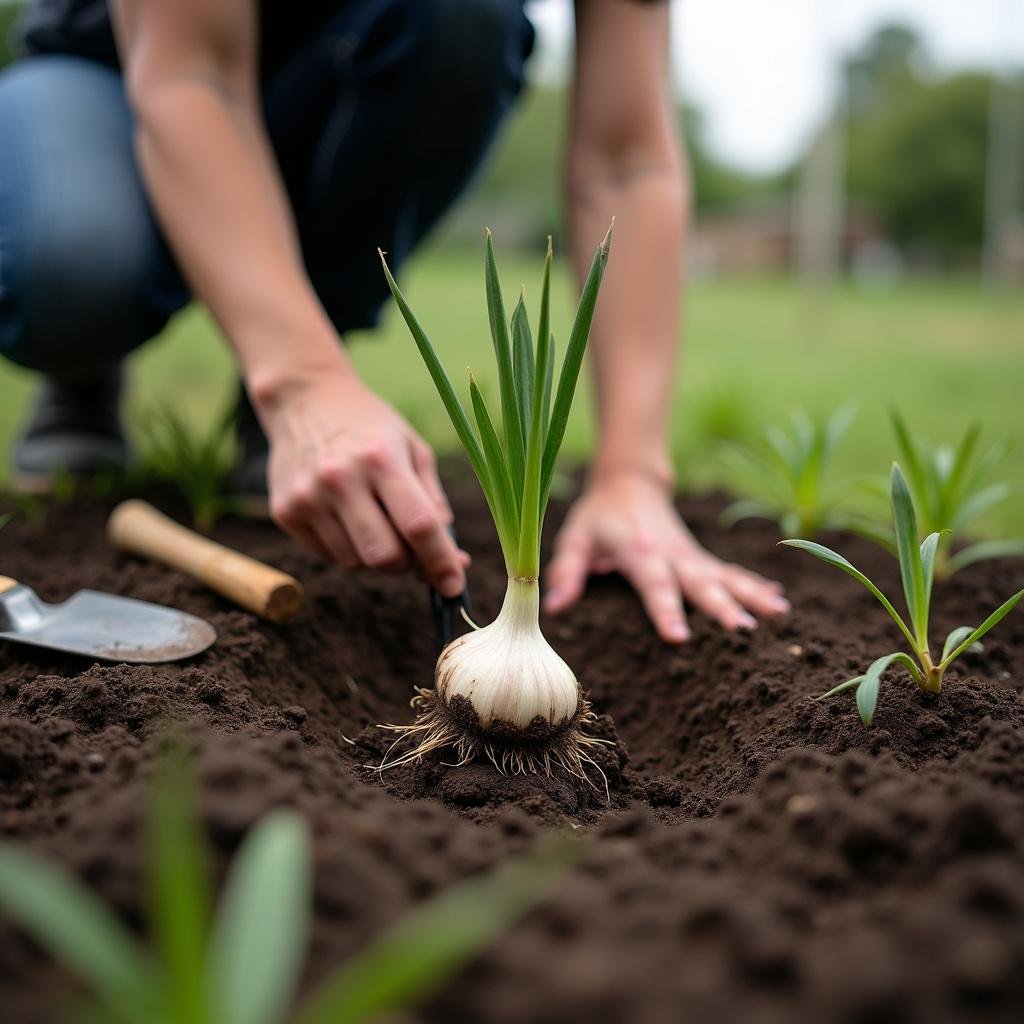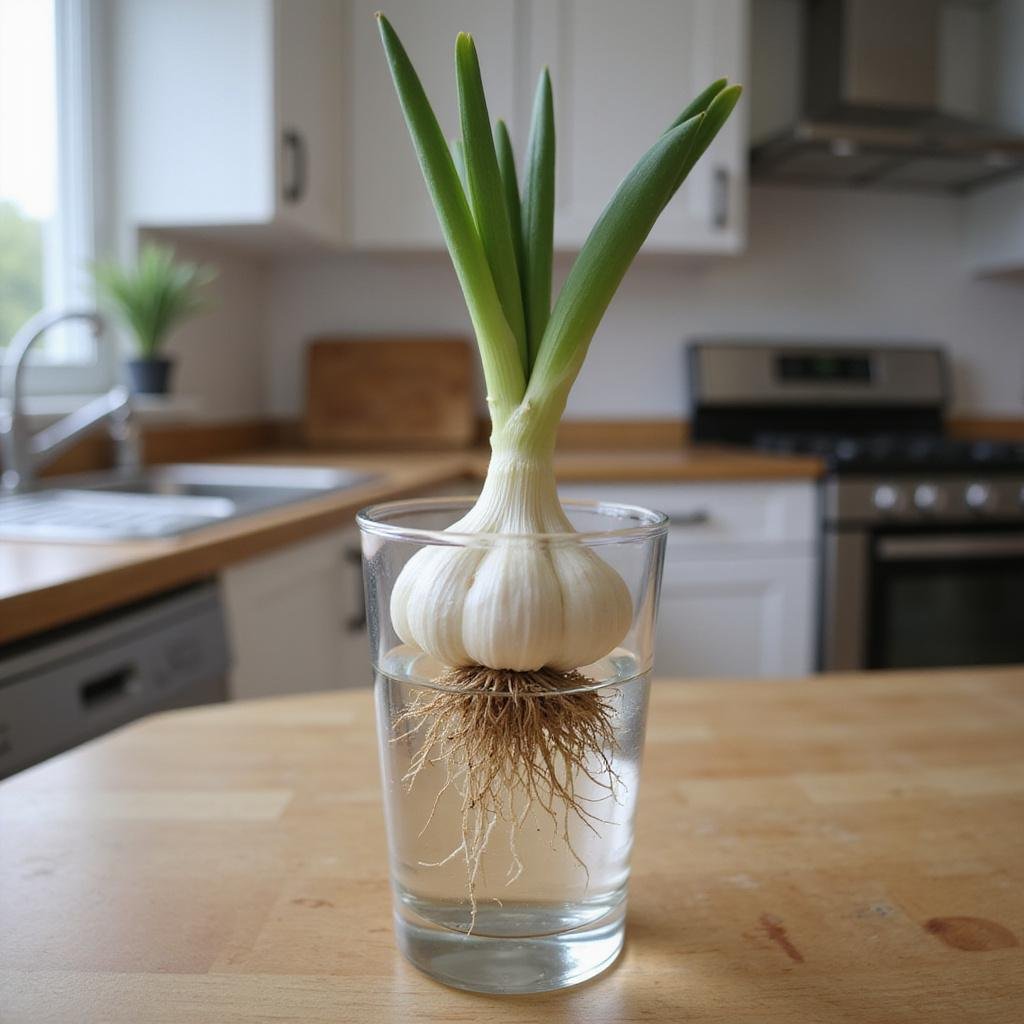1. Introduction
Growing garlic from kitchen scraps is an accessible and highly rewarding gardening activity that allows you to turn everyday kitchen waste into fresh, flavorful garlic bulbs. Not only does this practice enhance sustainability and reduce food waste, but it also provides an ongoing supply of garlic for your culinary adventures. This comprehensive guide will walk you through the step-by-step process of growing garlic from kitchen scraps, while also emphasizing the importance of mindful practices. Incorporating guided meditation for stress relief and other stress reduction techniques can greatly enhance your gardening experience, promoting relaxation, mental clarity, and emotional well-being. Whether you’re a seasoned gardener or a beginner, this method is perfect for cultivating your own garlic while nurturing your mental health through mindfulness meditation and relaxation exercises.
2. Understanding the Basics of Growing Garlic from Kitchen Scraps
Garlic is a versatile culinary herb that can be easily propagated from the cloves left after cooking. When considering growing garlic from kitchen scraps, you can use individual garlic cloves or whole bulbs, making it an affordable and eco-friendly way to garden. The process involves planting the cloves in well-prepared soil, maintaining optimal environmental conditions, and nurturing your plants as they grow. Besides the physical benefits of growing your own garlic, engaging in mindful gardening practices—such as meditation for anxiety, stress management strategies, and mindfulness meditation—can help keep you relaxed and focused during the entire process. Embracing mental health relaxation techniques, like calming meditation practices, will make your gardening both productive and a source of inner peace.
3. Essential Materials Needed for Growing Garlic
- Garlic cloves (preferably organic and healthy)
- Rich, well-draining soil
- Large pots or garden beds for planting
- Watering can or spray bottle for consistent watering
- Mulch to conserve moisture and suppress weeds
- Gardening gloves and essential tools for planting and maintenance
4. Step-by-Step Guide to Growing Garlic from Kitchen Scraps
Choosing the Right Garlic Cloves
Start with selecting healthy, disease-free garlic cloves from your kitchen scraps. Look for plump, firm cloves that are free from mold, sprouting issues, or damage. Choosing quality cloves ensures better growth and a more successful harvest. Before planting, consider reviewing your favorite tools such as the Fullstar Vegetable Chopper and Spiralizer to prepare your vegetables efficiently, including garlic, or for prepping other garden produce.
Preparing the Cloves for Planting
Peel off any loose outer skin of the garlic cloves, leaving the core intact. Allow them to dry in a shaded area for a day or two to prevent rot when planted. As you prepare your garlic for planting, take a moment to practice mindfulness exercises like deep breathing or calming meditation to foster patience and focus. Engaging in meditation for depression or stress reduction can help set a peaceful tone for your gardening activity and improve your overall mental clarity meditation.
Planting Your Garlic
Plant each garlic clove pointy side up, about 2 inches deep and 4-6 inches apart. Cover with soil and water thoroughly to settle the soil and encourage root establishment. While planting, you might find it helpful to tune into your surroundings with mindfulness exercises, focusing on the sensation of soil and the smell of the garden. Integrate daily meditation routines or relaxation exercises to boost your mental health relaxation practices, allowing you to cultivate both your garden and inner peace simultaneously.
Maintaining Your Growing Garlic
Keep the soil evenly moist but avoid waterlogging. Use mulch—a technique that conserves moisture and helps prevent weeds—and continue to observe your garlic plants regularly. Incorporate stress management strategies such as guided meditation for stress relief during your gardening sessions. This practice will help you stay calm and centered while tending to your garden, turning outdoor activity into a peaceful meditation experience.
5. Tips for Successful Garlic Cultivation
- Select a sunny location to maximize growth potential
- Maintain consistent watering, especially during dry periods
- Use organic fertilizer or compost to nourish your plants
- Practice meditation for depression and anxiety to stay patient and positive
- Rotate your garlic crop yearly to prevent soil-borne diseases from building up
6. Harvesting and Storing Garlic
Harvest garlic when the lower leaves turn brown and start to wither. Carefully dig up the bulbs, then cure them in a dry, well-ventilated space for a few weeks. During this waiting period, utilize soothing relaxation exercises, such as calming meditation practices, to manage any gardening stress. Proper storage with airtight containers or traditional curing methods ensures your garlic stays fresh and ready to use.
7. Incorporating Meditation and Mindfulness into Your Gardening Routine
Combining gardening with mindfulness meditation can elevate your mental clarity meditation and emotional well-being practices. Here are some effective ways to incorporate meditation tips into your gardening routine, making it a holistic activity for body and mind:
- Guided Meditation for Stress Relief: Use audio-guided sessions before or after gardening to relax your mind and deepen your connection with nature. For instance, listening to guided meditation for stress relief enhances tranquility during planting or harvesting.
- Mindfulness Exercises: Concentrate on the sensory experiences—such as the texture of soil, the scent of garlic, or the sound of rustling leaves—to foster a peaceful state meditation.
- Breathing Exercises for Stress: Practice deep breathing during garden breaks to ease anxiety and promote relaxation exercises, turning gardening into a form of meditative relaxation.
8. Benefits of Combining Gardening with Meditation
The synergy of gardening and stress relief techniques such as meditation for anxiety or meditation for depression offers a comprehensive approach to mental health relaxation. Gardening is known to boost concentration, reduce stress, and promote emotional resilience. When paired with mindfulness exercises or stress management strategies, it cultivates inner peace and enhances overall wellness—making your gardening routine a pathway not only to fresh garlic but also to a peaceful, clear mind. For additional relaxation techniques, you can explore various stress relief tips and mental clarity meditation methods that complement your gardening efforts.
9. Frequently Asked Questions (FAQs)
What is the best way to start guided meditation for stress relief while gardening?
Find a quiet corner in your garden where you can sit comfortably without distractions. Use guided meditation for stress relief recordings or apps, focusing on your breath and the natural sounds around you. Skills like practicing mindfulness exercises and paying attention to the sensation of soil and plants will deepen your relaxation and enhance your gardening experience.
How long should I practice mindfulness meditation daily for mental health benefits?
Even just 5 to 10 minutes of daily meditation routines can produce noticeable benefits for mental clarity meditation, emotional well-being practices, and stress reduction techniques if practiced consistently. Make it a daily habit to maximize your mental health relaxation and overall mindfulness exercises.
Can meditation help with anxiety relief methods while gardening?
Absolutely. Mindfulness exercises and calming meditation practices are proven to be effective anxiety relief methods, helping to lower stress levels and promote a peaceful state whether you’re gardening, cooking, or engaging in daily activities. Combining meditation tips with outdoor gardening creates a nurturing environment for emotional balance and relaxation.
10. Conclusion
Growing garlic from kitchen scraps is a gratifying activity that merges sustainable gardening with the mental health relaxation benefits of meditation. By integrating stress management strategies—such as guided meditation for stress relief, mindfulness exercises, and breathing exercises for stress—you can elevate your gardening experience into a holistic path towards emotional well-being. Cultivate not only fresh garlic but also a peaceful, focused mind through meditation habits and emotional well-being practices. Embrace this natural approach to enhance your garden and mental health daily.


